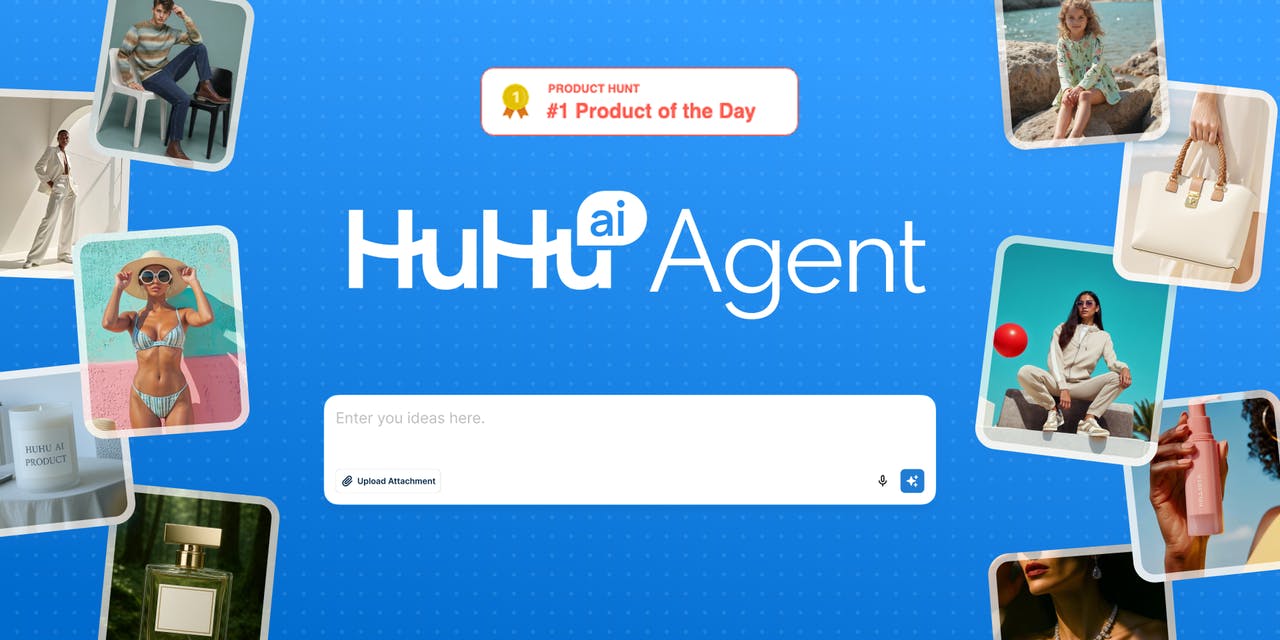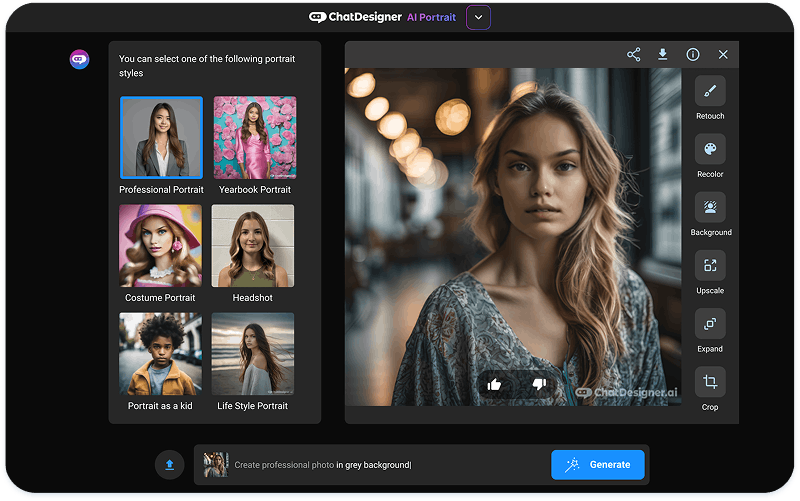From Failure to Product Hunt #1: The Two-Year Journey Behind HuHu AI Agent
On July 27, 2025, our team marked a significant milestone: our @HuHu AI earned the coveted #1 Product of the Day ranking on Product Hunt. It was a defining moment after two years of iteration, pivots, and lessons learned.

In the sections that follow, I’ll take you through the full story behind how we got here—from early failures and model training to working with real clients and relaunching with purpose-driven clarity.
Starting too early: the first attempt at an AI Agent
At the end of 2023, our team launched an AI agent called ChatDesigner.ai — a tool designed to generate product visuals and content layouts for eCommerce brands. If this sounds similar to today’s trending apps like Lovart.ai, it’s because the core idea was nearly identical.
The only difference?
We were too early.

Back then, we were working with GPT-3.5 and Stable Diffusion 1.5 — models that struggled to understand natural language, and outputs that were visually... disappointing. We ran full funnel tests over three months: our customer acquisition cost was $30, and user LTV only $22.
We hit a wall. The product didn’t convert. The tech wasn’t ready.
So we made the tough call: we shut it down, went without pay, and pivoted.
Ground zero: solving a real customer problem
In early 2024, a former colleague reached out with a challenge:
“I run supply chain for a major fashion department store in North America. Getting model shoots done is a nightmare. Can you do it with AI?”
That single question lit the fuse.
We audited all the open-source virtual try-on solutions and quickly discovered a hard truth: none of them were suitable for real commercial photography. Most only worked with womenswear, supported limited angles, and couldn’t handle the variety required for actual product imagery.
So we rolled up our sleeves and started from scratch.

With full data authorization, we trained a custom try-on model based on years of real product images. Our team spent months re-implementing academic papers, overcoming proprietary model limitations, and sleeplessly iterating on training pipelines. In September, we finally shipped a model that outperformed SOTA benchmarks and launched our earliest try-on service.
But again — reality hit hard.
Great tech, weak revenue
Despite the tech being objectively better, sales were slow.
The market was already crowded with similar-looking products.
Product differentiation was thin.
Our PLG strategy stalled.
We couldn’t even get featured on Product Hunt.
And it forced us to admit: great tech ≠ real demand.
We pivoted again — this time toward enterprise clients. We collected more use cases, better training data, and eventually signed with a major fast fashion platform in Asia (only to get outmaneuvered by the local partner who cut us out post-sale).
Luckily, through alumni connections, we found a new strategic partner and kept going.
From late 2024 to now, we’ve worked closely with dozens of eCommerce clients and learned the entire lifecycle of eCommerce content — from product validation and launches, to promotions and end-of-life sellouts. This feedback shaped what we’re truly building.
Huhu Studio: when AI starts replacing human workflows
In April 2024, we launched Huhu Studio for enterprise.
Major retailers in the US and Europe began piloting the system. Even national-level platforms signed on. Brands using HuHu have seen up to 5× higher conversions, 50% cost reductions over studio shoots, and a dramatic acceleration in go-to-market speed.
But with power came complexity — onboarding was difficult, and user education costly.
Meanwhile, we watched new Agent-style tools like @Lovart @manus @Genspark — lighter, faster, and simpler.
We realized it was time to go back to our roots: the agent model.
A smarter start: building the new Huhu AI Agent
In June, we spun up a special task force and rebooted the ChatDesigner concept — but this time, with today’s AI capabilities. We rebuilt it using state-of-the-art large language and image models, and reimagined the workflow for modern eCommerce teams.

The new goals were clear:
- Understand business context automatically
- Recommend content formats based on product goals
- Generate eCom-ready visuals and copy in one go
Just 3 weeks later, on July 27, we launched the new HuHu AI Agent — and it became #1 Product of the Day on Product Hunt.
But this time, it wasn’t just an experimental project.
It was the culmination of two years of painful pivots, model tuning, and deep learning — in every sense.
The difference between a tool and an agent
Most AI tools need you to tell them what to do.
Our Agent figures that out for you.
While others ask you to pick the scene, model, and layout…
HuHu AI Agent recommends the best product visuals and copy combinations based on your category, brand style, and sales objective.
We don’t just give you a better tool — we offer a smarter teammate. This is a next‑generation AI agent built to streamline how eCommerce teams manage product content. From generating lifelike try‑on visuals to optimizing product pages and publishing updates in real time—this Agent takes action, not just suggests improvements.
Whether you're a DTC brand, a marketplace seller on Amazon or Etsy, or an established retailer, this agent helps you work faster, look better, and stay consistent across global markets.
What’s next: building an AI influencer
Our long-term vision?
To evolve this agent into a full-blown AI Influencer Agent — capable of:
- Planning content calendars
- Executing production
- Publishing to channels
- Interacting with followers
- Even driving revenue autonomously
[Image of the workflow above, optional]
Influencers today spend 60%+ of their time on content creation.
If we’re building for that future, we’re already at the perfect starting point.
The full circle
Two years ago, we started by building an agent.
Since then, we’ve seen hype cycles, commercial dead-ends, betrayal, breakthroughs, and burnout.
But we came back to the starting line with something different: answers.
Not all starting points are failures.
Some are launchpads in disguise.w
We’re ready now. And this time, we’re building something that lasts.



Replies